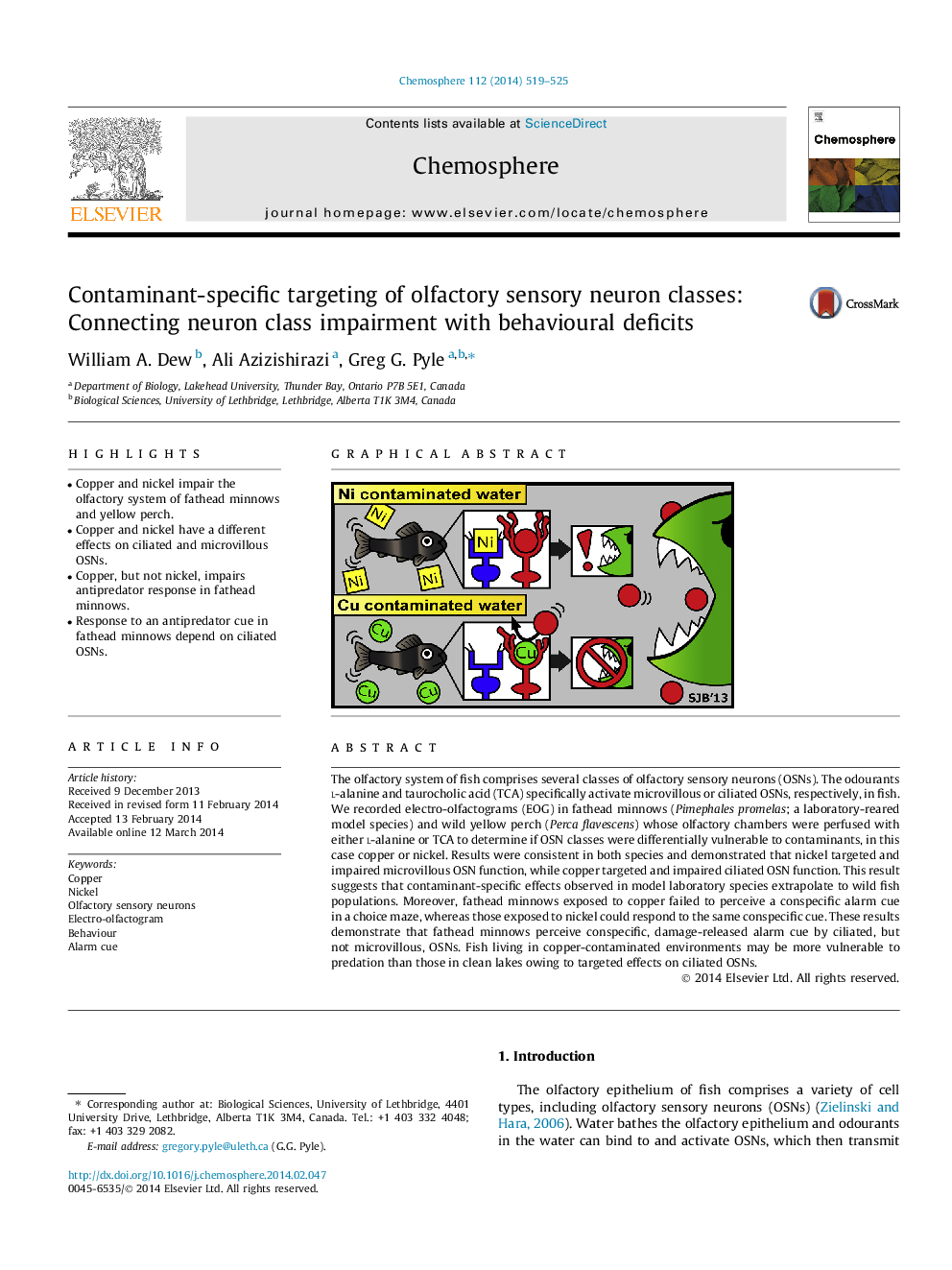| کد مقاله | کد نشریه | سال انتشار | مقاله انگلیسی | نسخه تمام متن |
|---|---|---|---|---|
| 6308896 | 1618859 | 2014 | 7 صفحه PDF | دانلود رایگان |
- Copper and nickel impair the olfactory system of fathead minnows and yellow perch.
- Copper and nickel have a different effects on ciliated and microvillous OSNs.
- Copper, but not nickel, impairs antipredator response in fathead minnows.
- Response to an antipredator cue in fathead minnows depend on ciliated OSNs.
The olfactory system of fish comprises several classes of olfactory sensory neurons (OSNs). The odourants l-alanine and taurocholic acid (TCA) specifically activate microvillous or ciliated OSNs, respectively, in fish. We recorded electro-olfactograms (EOG) in fathead minnows (Pimephales promelas; a laboratory-reared model species) and wild yellow perch (Perca flavescens) whose olfactory chambers were perfused with either l-alanine or TCA to determine if OSN classes were differentially vulnerable to contaminants, in this case copper or nickel. Results were consistent in both species and demonstrated that nickel targeted and impaired microvillous OSN function, while copper targeted and impaired ciliated OSN function. This result suggests that contaminant-specific effects observed in model laboratory species extrapolate to wild fish populations. Moreover, fathead minnows exposed to copper failed to perceive a conspecific alarm cue in a choice maze, whereas those exposed to nickel could respond to the same conspecific cue. These results demonstrate that fathead minnows perceive conspecific, damage-released alarm cue by ciliated, but not microvillous, OSNs. Fish living in copper-contaminated environments may be more vulnerable to predation than those in clean lakes owing to targeted effects on ciliated OSNs.
Journal: Chemosphere - Volume 112, October 2014, Pages 519-525
